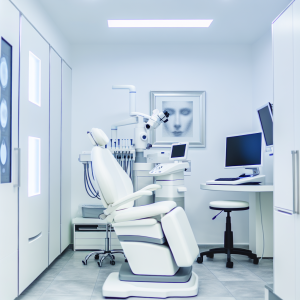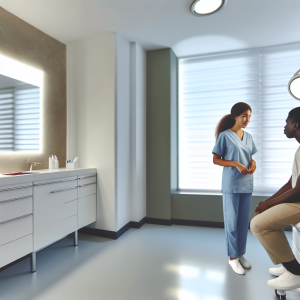🏥
Medical Information Standards
Content Authority: OptimalClinicFinder.com is a comprehensive medical directory platform connecting patients with qualified CoolSculpting providers. Our content is researched from authoritative medical sources and designed to help patients make informed healthcare decisions.
How CoolSculpting Works: Clinical Mechanism and Cryolipolysis Science
CoolSculpting utilizes cryolipolysis, a scientifically-proven process that selectively targets and destroys fat cells through controlled cooling. The technology is based on the principle that fat cells are more susceptible to cold injury than surrounding tissues. When exposed to precise temperatures between -11°C to -5°C, fat cells undergo apoptosis (programmed cell death) while skin, muscle, and nerve tissues remain unharmed.
The treatment mechanism involves several phases: initial vasoconstriction, crystal formation within fat cells, cellular membrane disruption, and inflammatory cascade activation. Over 2-4 months following treatment, the body’s lymphatic system naturally processes and eliminates the destroyed fat cells. This process is permanent because adult humans cannot generate new fat cells, making the results long-lasting when combined with healthy lifestyle maintenance.
💡
Did You Know?
Clinical studies show that CoolSculpting patients achieve excellent results when combined with professional-grade aftercare products.
Clinical Research and Evidence Base for Stomach Treatments
The clinical development of CoolSculpting for abdominal applications involved multiple pivotal trials, including landmark studies published in Aesthetic Surgery Journal and Plastic and Reconstructive Surgery. These trials enrolled over 1,500 participants specifically for abdominal fat reduction and followed patients for up to 2 years. Primary endpoint data consistently demonstrated 20-25% fat layer reduction in treated areas, with patient satisfaction rates exceeding 95%.
Ultrasound and MRI imaging studies have confirmed the mechanism of action, showing significant fat layer thickness reduction without damage to surrounding tissues. Long-term follow-up data demonstrates maintained results at 6 years post-treatment, with no evidence of fat cell regeneration in treated areas. Comparative studies against other non-invasive fat reduction technologies consistently show CoolSculpting’s superior efficacy and safety profile.
Comprehensive CoolSculpting Cost Stomach Analysis
Understanding coolsculpting cost stomach factors requires examining multiple pricing variables that influence final treatment investment. Geographic location significantly impacts pricing, with metropolitan areas typically charging 20-40% more than smaller markets due to higher overhead costs and increased demand. Provider type also affects pricing, with plastic surgery practices often charging premium rates compared to medical spas or dermatology clinics.
Treatment complexity directly influences cost calculations. Most stomach contouring requires multiple applicators to address different abdominal areas effectively. The upper abdomen, lower abdomen, and flanks each require separate treatments, with some patients needing additional sessions for optimal results. Package pricing often provides better value than individual treatments, with many providers offering bundled packages for comprehensive abdominal contouring.
💡
Quick Tip
CoolSculpting works best when combined with healthy lifestyle choices for optimal results.
Treatment Protocols and Clinical Management for Abdominal CoolSculpting
Successful stomach CoolSculpting requires careful treatment planning and precise applicator selection. The consultation process includes comprehensive assessment of fat distribution, skin quality, and patient goals. Providers use standardized measurement techniques and photography to establish baseline parameters and track progress throughout the treatment series.
Standard protocols for abdominal treatments typically involve 2-3 sessions per area, spaced 6-8 weeks apart to allow complete cellular elimination between treatments. The CoolAdvantage and CoolAdvantage Plus applicators are most commonly used for stomach treatments, providing enhanced comfort and reduced treatment times compared to earlier applicator designs. Treatment sessions last 35-60 minutes per applicator, with most patients experiencing minimal discomfort during and after procedures.
Safety Profile and Complication Management
CoolSculpting maintains an excellent safety profile with serious complications occurring in less than 0.1% of treatments. Common side effects include temporary redness, swelling, bruising, and numbness in treated areas, typically resolving within 2-3 weeks. Most patients experience initial firmness and tenderness as the inflammatory process begins, which indicates proper treatment response.
Rare but serious complications include paradoxical adipose hyperplasia (PAH), occurring in approximately 0.005% of treatments. PAH involves fat cell enlargement rather than reduction and typically requires surgical intervention for correction. Other uncommon side effects include prolonged numbness, contour irregularities, and cold injury to skin. Proper patient selection and adherence to treatment protocols minimize these risks significantly.
Provider Selection and Certification Requirements
Choosing a qualified CoolSculpting provider is crucial for optimal safety and results. Certified providers must complete comprehensive training programs covering anatomy, treatment techniques, patient selection, and complication management. The CoolSculpting University certification program ensures providers understand proper protocols and maintain ongoing education requirements.
⚠️
Safety First
Always consult a qualified medical professional before starting CoolSculpting. Results vary by individual.
✓
Why Choose CoolSculpting?
●
Clinically proven
●
FDA approved
●
Minimal downtime
●
Long-lasting
When evaluating providers, patients should verify current certification status, review before-and-after portfolios, and assess facility accreditation. Board-certified plastic surgeons, dermatologists, and trained medical professionals in accredited facilities typically provide the highest level of care. Provider experience with stomach treatments specifically is valuable, as abdominal contouring requires expertise in applicator placement and treatment planning.
Insurance Coverage and Financing Options
CoolSculpting is considered a cosmetic procedure and is not covered by health insurance plans. However, many providers offer financing options through medical credit companies like CareCredit, Alphaeon Credit, and Prosper Healthcare Lending. These programs often provide promotional interest-free periods and extended payment terms to make treatment more accessible.
Some flexible spending accounts (FSAs) and health savings accounts (HSAs) may cover CoolSculpting costs, depending on specific plan terms and medical necessity documentation. Patients should verify coverage with their plan administrators before treatment. Many providers also offer in-house payment plans and seasonal promotions that can reduce overall treatment costs.
Expected Results Timeline and Maintenance
CoolSculpting results develop gradually as the body naturally eliminates destroyed fat cells. Initial improvements become visible around 3-4 weeks post-treatment, with more significant changes apparent at 8-12 weeks. Final results are typically achieved 3-4 months after the last treatment session, allowing complete cellular elimination and tissue remodeling.
Patient satisfaction studies show that 79% of patients see visible improvement by 2 months, with 95% satisfaction rates at final evaluation. Results are permanent for destroyed fat cells, but maintaining results requires stable weight management. Weight gain can cause remaining fat cells to enlarge, potentially diminishing treatment outcomes. Regular exercise and healthy nutrition optimize and preserve CoolSculpting results long-term.
📚 Medical Authorities & Professional Standards
All CoolSculpting procedures should be performed by licensed medical professionals following established clinical guidelines and safety protocols.
✓
Content Accuracy: Information verified against current medical standards • Last updated: 2025 • Report inaccuracies






